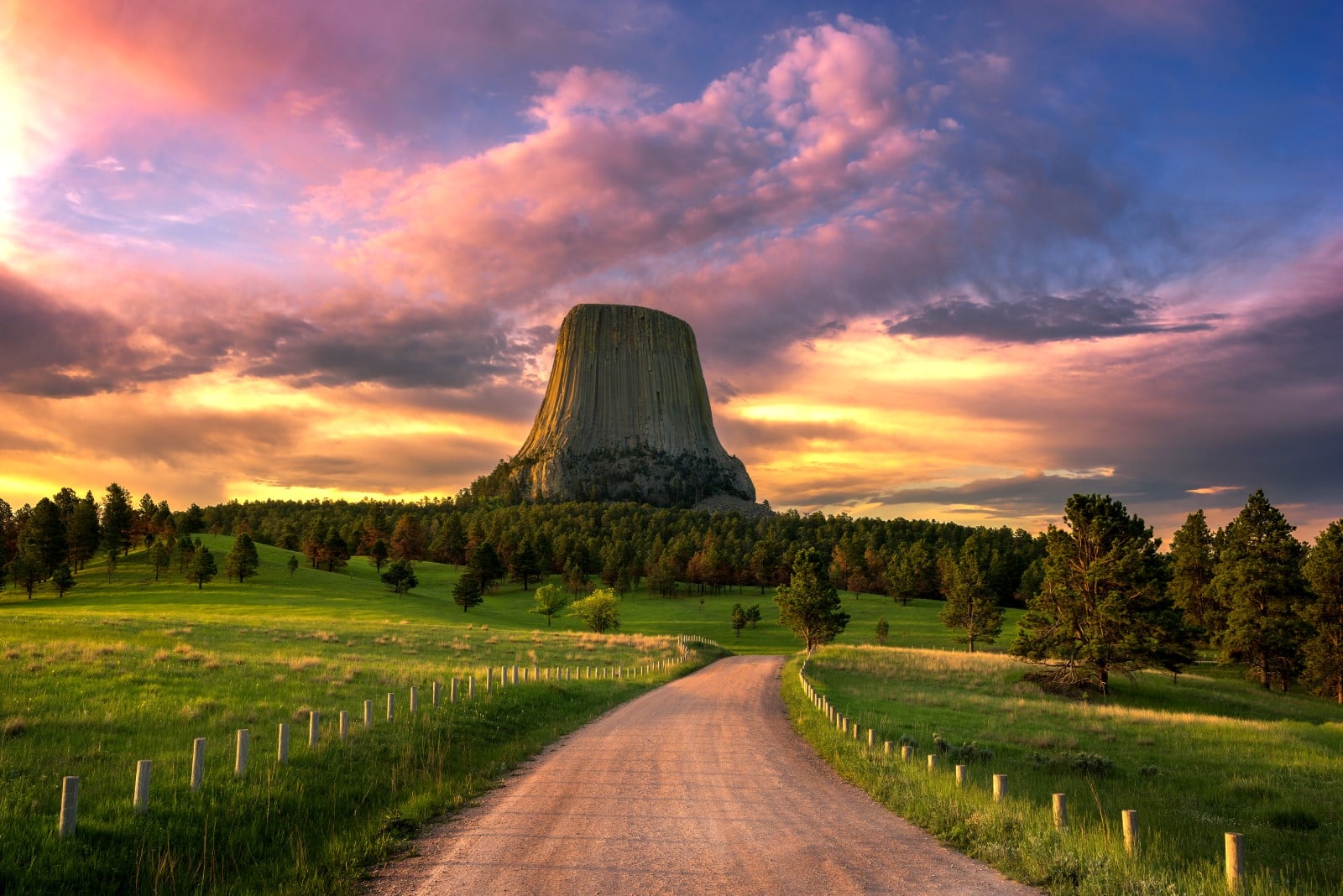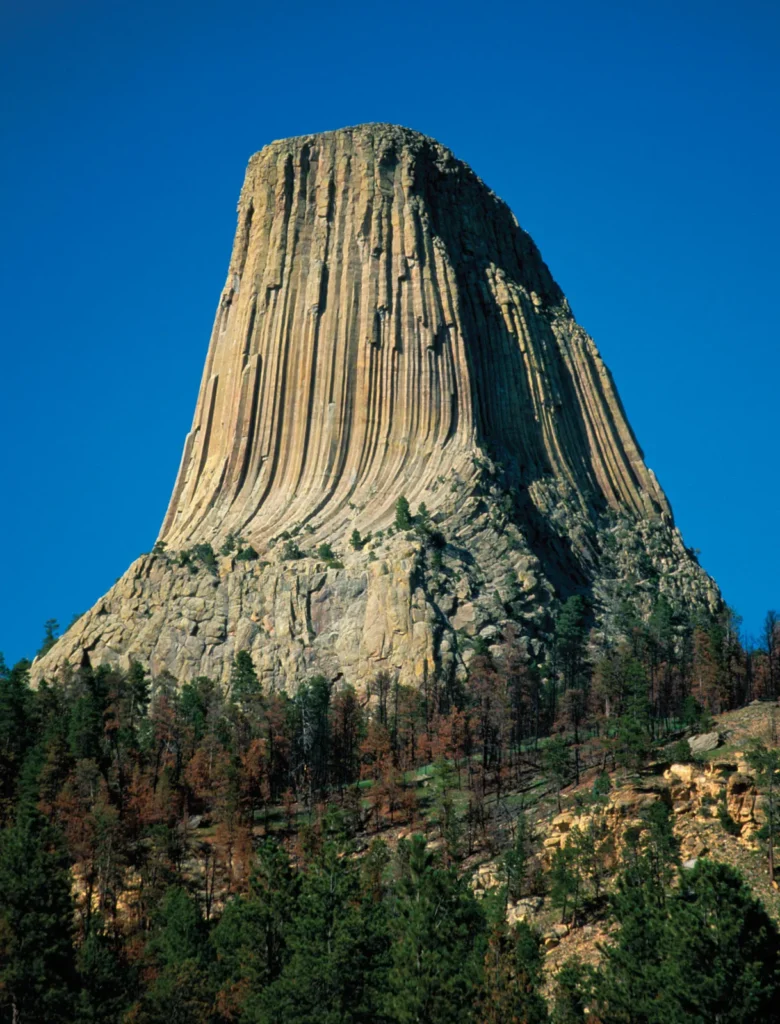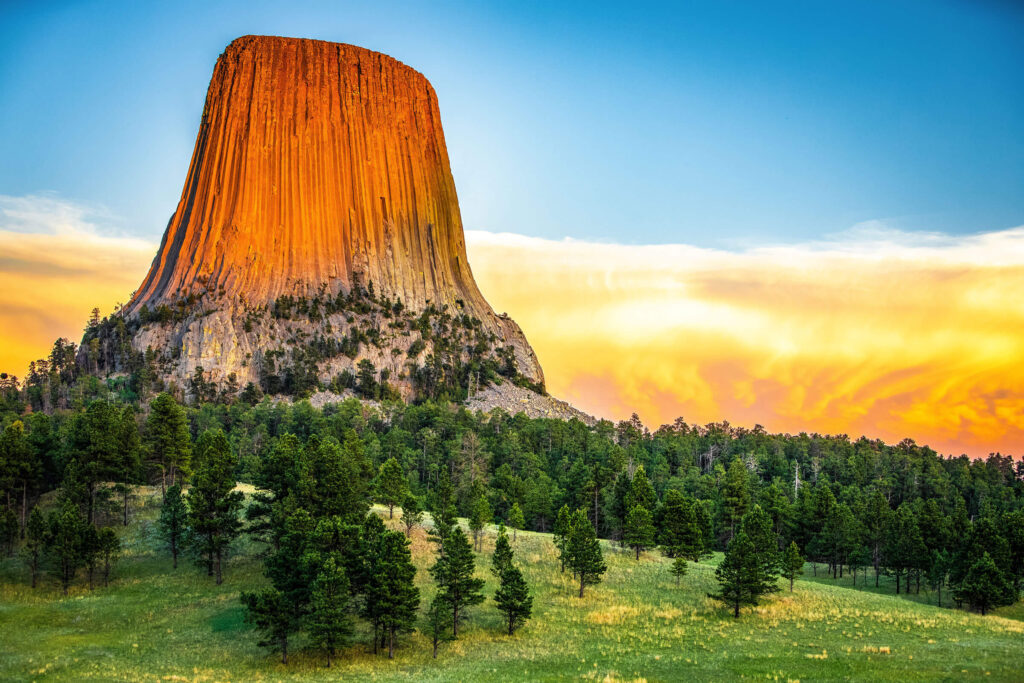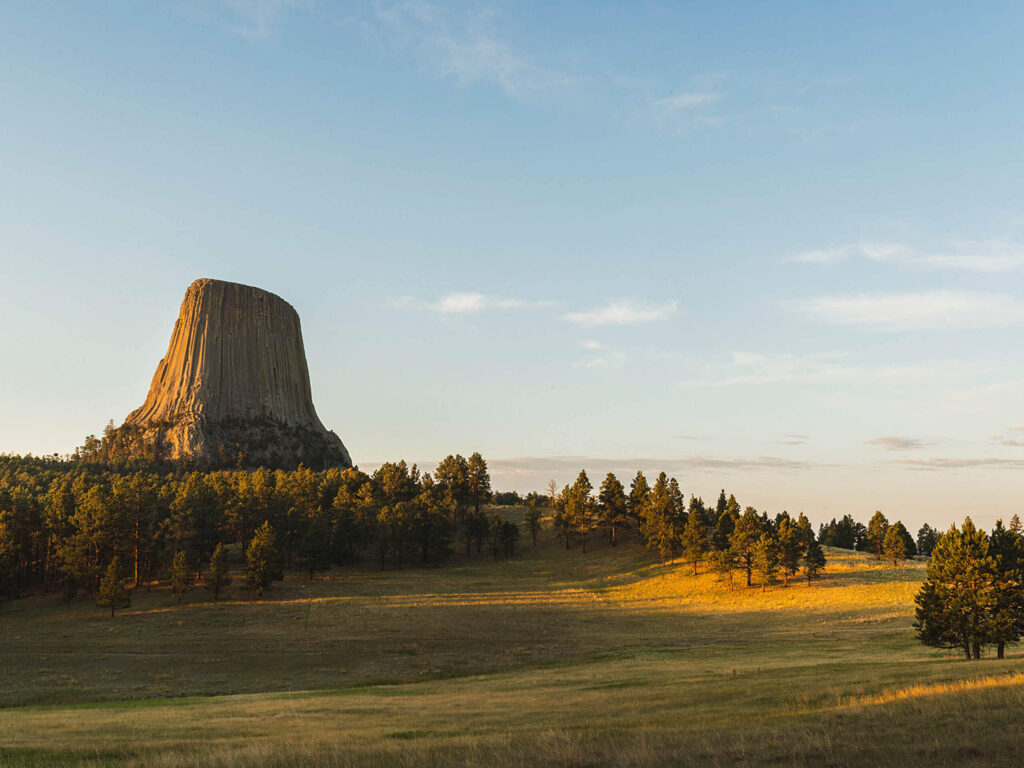How Devils Tower Got Its Name: The Legend, Misinterpretation, and Sacred Meaning Behind the Monument

Introduction
Rising dramatically 1,267 feet above the surrounding plains of northeastern Wyoming, Devils Tower is one of the most recognizable and mysterious landmarks in the United States. Designated as the first U.S. National Monument by President Theodore Roosevelt in 1906, the tower is a geological marvel, a spiritual site for Native American tribes, and a subject of fascination for scientists, adventurers, and storytellers alike.
But despite its iconic status, few know the true story behind its name—a tale woven from linguistic error, mythological misinterpretation, and cultural tension. This article explores how Devils Tower got its name and why that name remains a source of controversy and reverence today.
1. Geological Origins: What Is Devils Tower?
Before diving into its name, it’s essential to understand what Devils Tower is.
🪨 Formation:
- Devils Tower is an igneous intrusion, likely formed 50 to 60 million years ago during the Paleocene Epoch.
- It is composed of phonolite porphyry, a type of igneous rock.
- The tower’s columnar jointing—its long, hexagonal pillars—was created as molten rock cooled and contracted beneath the Earth’s surface.
- Over time, erosion of the softer sedimentary rock surrounding the structure exposed the tower.
🌍 Scientific Mystery:
While it’s generally agreed to be the hardened core of a volcanic structure, whether it was a laccolith, volcanic plug, or stock is still debated.

2. Native American Legends and Names
For centuries before settlers arrived, Plains tribes regarded Devils Tower as a sacred place. It features prominently in the oral traditions and spiritual beliefs of multiple Native American nations, including:
- Lakota Sioux
- Cheyenne
- Kiowa
- Arapaho
- Crow
🌌 Kiowa and Lakota Legend:
One of the most famous stories tells of seven young girls who were chased by a giant bear. To save them, the Great Spirit raised the ground beneath them into the sky. The bear tried to climb the steep sides, leaving claw marks on the rock—explaining the vertical striations seen today. The girls were placed in the sky as the Pleiades constellation.
🪶 Native Names:
The tower has been known by many names:
- “Bear Lodge” (Lakota: Mato Tipila)
- “Tree Rock” or “Aloft on a Rock”
- “Grizzly Bear’s Lodge”
- “Mythic Owl Mountain”
These names emphasize the site’s animal symbolism, spiritual importance, and natural awe.
3. The Naming Error: “Devils Tower”
📜 1875 Expedition:
In 1875, during an expedition led by Colonel Richard Irving Dodge, an interpreter mistranslated a native name—possibly “Bear Lodge” or “Bad God’s Tower”—as “Devil’s Tower.”
Dodge later wrote in his journal:
“The Indians call this place ‘The Bad God’s Tower,’ a name adopted with proper modification… Devils Tower.”
The misinterpretation likely stemmed from:
- Confusion between the words for “spirit” (which can mean “sacred” or “supernatural” in Indigenous languages) and “evil spirit”
- Language and cultural misunderstandings
🔁 From Spirit to Satan:
The word “devil” was a Christian imposition that carried a very different meaning than Indigenous spiritual beliefs, transforming a sacred mountain into something associated with evil.
4. Devils Tower Becomes a National Monument
In 1906, President Theodore Roosevelt declared Devils Tower the first U.S. National Monument under the Antiquities Act.
Despite tribal protests about the name, “Devils Tower” was officially adopted and has remained ever since.
📈 Tourism and Pop Culture:
- Became a popular rock-climbing destination
- Featured in films, most notably Close Encounters of the Third Kind (1977), where it served as a central, mystical landmark
- Millions of visitors now travel to see the site annually

5. Cultural and Religious Significance
To many Native American tribes, Devils Tower is not just a landmark—it’s a sacred space for:
- Ceremonies
- Prayer offerings
- Vision quests
- Sun dances
These ceremonies continue to this day, particularly during the month of June, leading to respectful climbing closures requested by tribes.
6. The Push to Rename the Monument
For decades, tribal leaders and activists have petitioned the federal government to restore the original name.
🧾 The 2014 Petition:
Several tribes formally requested that the name be changed from “Devils Tower” to “Bear Lodge” to:
- Respect Indigenous traditions
- Correct the historical misinterpretation
- Remove the offensive religious connotation
🗣️ Opposition:
Some local business owners, residents, and politicians opposed the change, citing:
- Economic concerns related to tourism branding
- Historical continuity
- Resistance to “political correctness”
The U.S. Board on Geographic Names has considered the change, but as of now, no official renaming has occurred.
7. Balancing History, Science, and Sacredness
Today, Devils Tower stands at a crossroads of identities:
- A geological wonder admired by scientists
- A cultural flashpoint in the history of colonialism and Indigenous erasure
- A spiritual monument for Native peoples seeking respect and reclamation
The U.S. National Park Service now acknowledges the site’s sacred status and works to preserve both the natural environment and its multi-layered cultural importance.

Conclusion
The name “Devils Tower” is the result of a centuries-old mistranslation, one that continues to echo in debates over land, identity, and historical justice. To Native American nations, the tower is Mato Tipila—Bear Lodge, a holy place of stories, spirits, and connection to the Earth.
Whether one views the monument through the lens of science, history, or spirituality, it’s clear that Devils Tower remains one of America’s most profoundly meaningful landmarks—not just for how it looks, but for what it represents.




